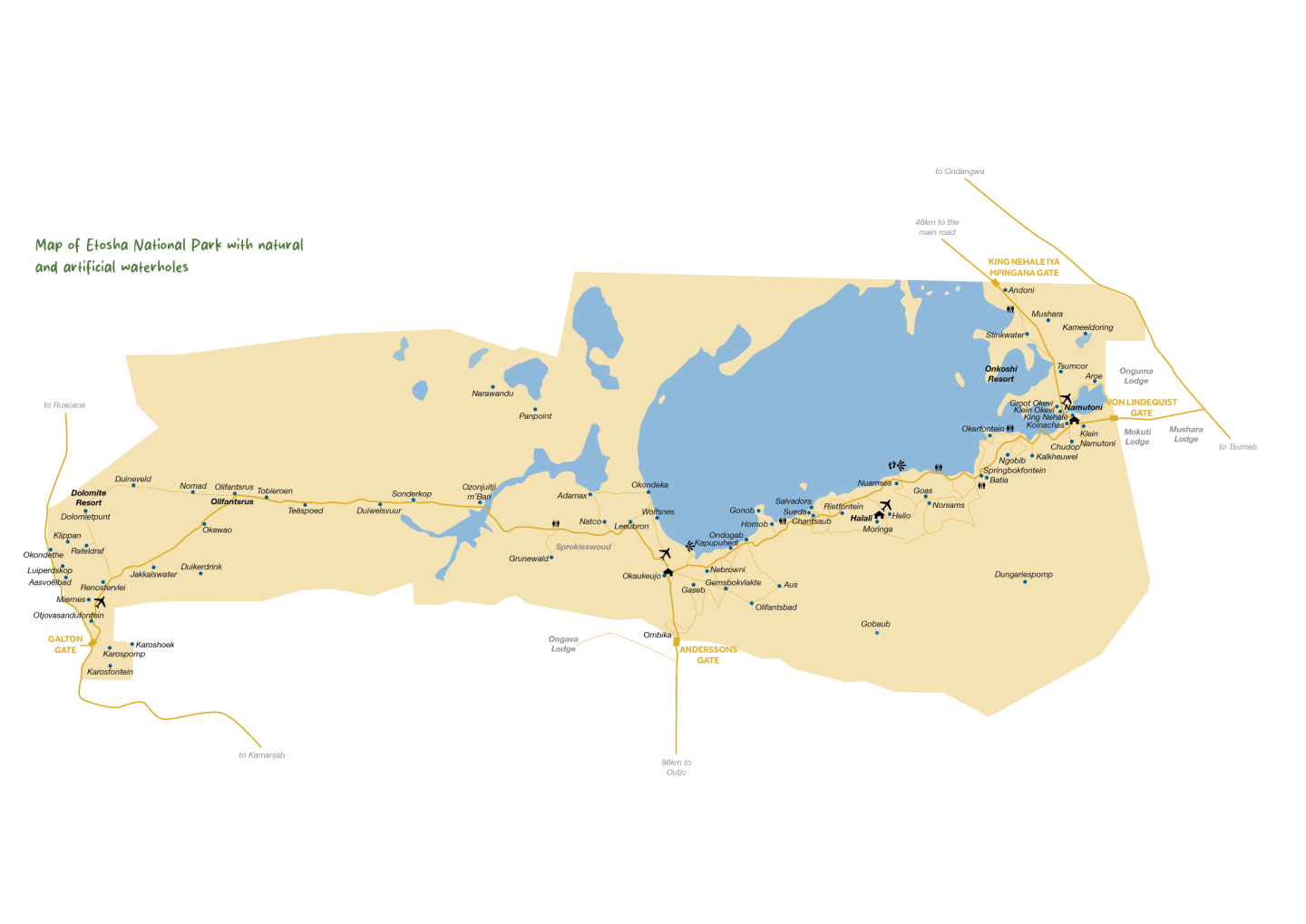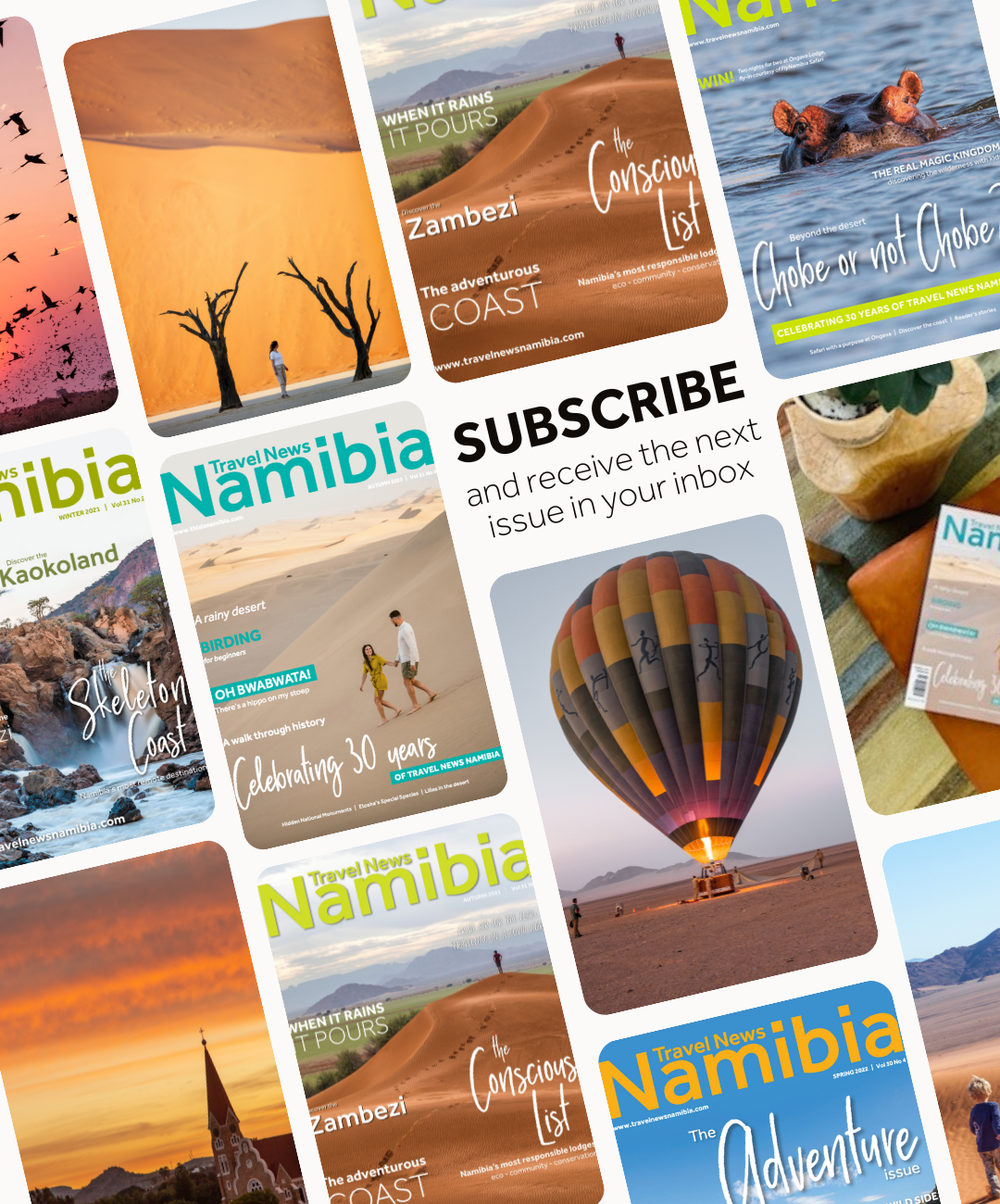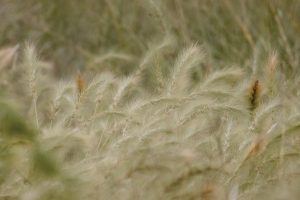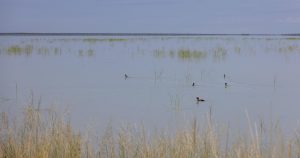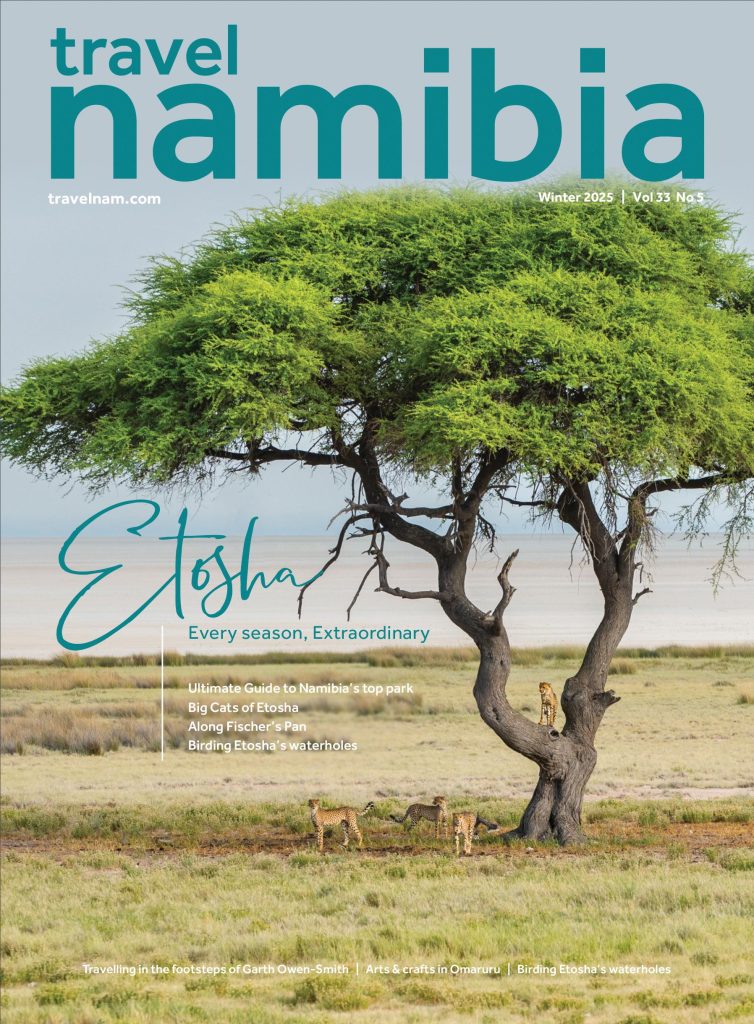
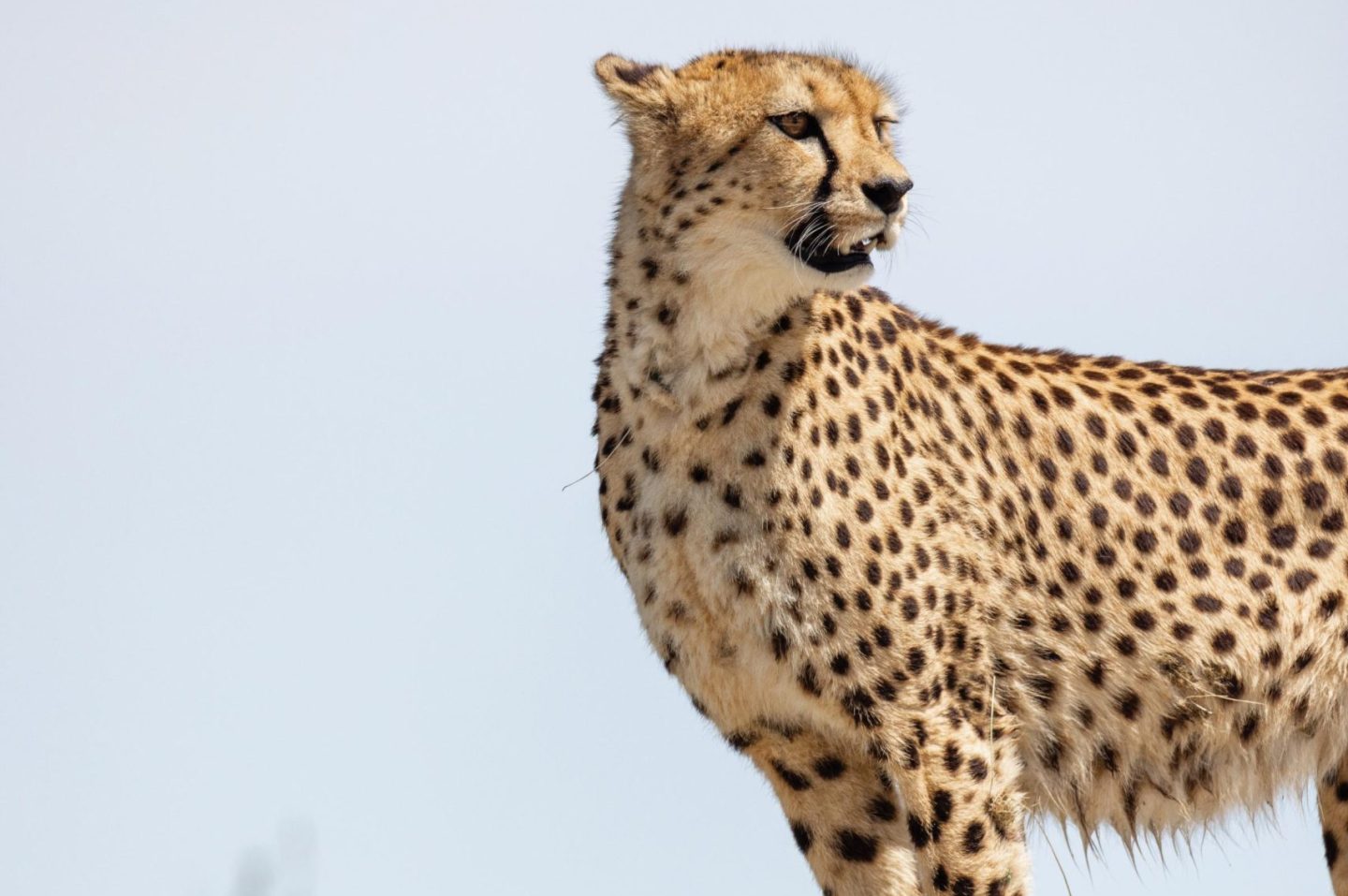
Etosha Unlocked
It begins with stillness. A lioness crouched in the golden grass, barely a ripple in the morning light. Nearby, a dust-coated elephant approaches a waterhole, flanked by a dazzle of zebras and an entourage of springbok. This is Etosha National Park, the shining jewel in Namibia’s crown, where every turn of the road unveils a wild adventure.
Text Elzanne Mcculloch
From the Winter 2025 issue
We arrived just after sunrise, dust swirling in the early morning light. We had left Okaukuejo Camp just 15 minutes prior and headed eastwards for our first waterhole stop of the game drive – Nebrownii. Named after the acacia bushes that are predominant in this part of the park, the waterhole sits just below a slightly elevated rise on an otherwise massive open plain. Usually, when approaching, you cannot see game at the waterhole from the road or turnoff, unless it is a large mammal such as an elephant. However, irrespective of where you are in the park, a congregation of parked vehicles is always a sure sign of a great sighting. This morning, though, we were the first to arrive. At least in vehicles… Because, as we turned into the cul-de-sac lookout area just above the waterhole, a welcome surprise awaited us. A lioness languidly lapped water at the pool’s edge. Movement off to the left caught our attention as a large lush-maned male sauntered over. What ensued was a 30-minute-long display of “the birds and the bees” – a wild and sometimes slightly violent display of nature’s dance. After their candid performance, they glanced back over their shoulders at us and promptly ambled off. Our morning had barely started and the grand theatre of nature had already delivered, confirming my firm belief that no visit to Etosha goes unrewarded, and the reason why I will return time and again. We drove on to our next incredible sighting, wondering if perhaps we would encounter those felines again in future, with a crèche of cubs in tow.
After a long day of meandering along the park’s routes, waterhole hopping and ticking off mammals, reptiles and birds from our long list, we return to the gates at Okaukuejo just before the requisite sunset closure. The sky is slowly changing colour. Our first port of call? The famous Okaukuejo waterhole. It is dark by now, yet already a solitary black rhino is drinking at the floodlit waterhole, ripples echoing across the water’s surface through the still dusk. Silent, ancient, electric. Hushed whispered voices “ooh” and “aah” as wild and wondrous creatures make their way for an evening drink, one after the other. We sit in silence and stare. The air is chilly, and we hunker down into thick jackets with a Stanley flask firmly gripped in hand. The contents may be coffee or red wine… Our fellow waterhole visitors will never know. And I reminisce on the many times I have sat at this waterhole, and the Moringa waterhole at Halali, sipping coffee or red wine, watching the theatre of the wildlife at night play out in all its glory. No matter the season, Etosha always delivers. My SD card in my camera is always full and my heart bursting with joy and contentment at the end of our journey.
Like most of Namibia, Etosha can be visited year-round, with different nuances and sightings to be enjoyed during different periods. But winter in Etosha is the peak safari season. As water becomes scarce, animals converge at the park’s iconic waterholes. For travellers, it means crisp days, epic game sightings, and front-row seats to Namibia’s greatest natural theatre.
WHAT MAKES ETOSHA UNIQUE?
The salt pan: Spanning 4,800 square kilometres, the Etosha Pan is so vast that it is visible from space. Once a mere lake fed by the Kunene River, it is now a shimmering mirage – a white expanse that occasionally fills with rain and flamingos.
Diversity of wildlife: Home to over 100 mammal species, including four of the Big Five, Etosha is one of Africa’s top safari destinations. Expect to see lion, elephant, rhino (black and white), giraffe, jackal, hyena, cheetah and the elusive leopard – alongside countless plains game.
Waterhole safari: The true magic of Etosha lies in its waterholes. Sit. Wait. And watch life unfold.
KNOW BEFORE YOU GO
Gates & Times
Etosha has four main entrances: Andersson Gate (south), Von Lindequist Gate (east), Galton Gate (west) and King Nehale (north). Gates open at sunrise and close at sunset. Do not get caught out – they are strict.
Camp Life
There are six rest camps inside the park: Okaukuejo, Halali, Namutoni, Onkoshi, Dolomite and Olifantsrus (camping only). Book early in peak season (June–October). Most have petrol, shops, pools and illuminated waterholes. There are a multitude of lodges and camps to choose from, situated at the park entrances and a short way off, with options for every traveller’s preference and budget.
Road Rules
- Speed limit: 60 km/h
- Stay on marked roads
- No off-road driving
- Never exit your vehicle outside designated areas
- Respect the silence of nature
Important to note: All national parks in Namibia have a strict NO DRONES and NO PLASTIC BAGS policy. Park officials will confiscate drones at the gate, from where you will have to collect them again upon exit.
ETOSHA’S TOP WATERHOLES
Moringa (at Halali): Secluded, quiet and perfect for leopards.
Klein Namutoni (at Namutoni): Frequented by elephants and herds of plains game.
Nebrownii: Excellent for large elephant bulls and mixed herds. Chudop: One of the most reliable spots near Namutoni.
Goas: Great birdlife, especially in the dry months.
Salvadora & Sueda: Fantastic for lion sightings on the open plains.
THE HIDDEN GEMS
Fischer’s Pan: After good rain, this area near Namutoni fills with water and attracts flamingos, spoonbills and pelicans.
Dolomite Camp: Located in the remote western side, this camp feels like a private safari. Fewer tourists, but big game.
Andoni Plains (near King Nehale Gate): Ideal for large herds of zebra and gemsbok. Far from the crowds.
BIRDWATCHER’S PARADISE
Etosha is not just about big game. With over 340 bird species, winter brings migratory specials and striking resident birds like the Lilac-breasted Roller, Bateleur, Kori Bustard and Secretarybird. Make sure to bring your binoculars.
TIPS FROM THE PROS
- Get up early: Predators hunt at dawn.
- Bring your own snacks.
- Pack your binoculars: They are essential, especially for the vast open plains.
- Check your fuel: Fill up at every opportunity.
- Keep the camera ready: With long lenses and patience, you’ll capture magic.
LESSER-KNOWN FACTS
- Etosha is malaria-free in winter.
- The park’s name means “Great White Place” in Oshindonga.
- Black rhinos are more commonly seen here than in most parks across Africa.
- The Etosha Pan occasionally turns pink with flamingos when seasonal rains are generous.
- It was declared a game reserve in 1907, making it one of the oldest in Africa.
WHY WINTER IS PRIME TIME
Winter in Etosha is a study in drama and contrast: crisp air and warm days, parched earth and the life it draws in, quiet roads and loud roars in the distance. Whether you are a seasoned safari-goer or a first- timer, Etosha in winter is unforgettable. So pack your camera, your sense of wonder and your love for wild places – Etosha is calling. TN

